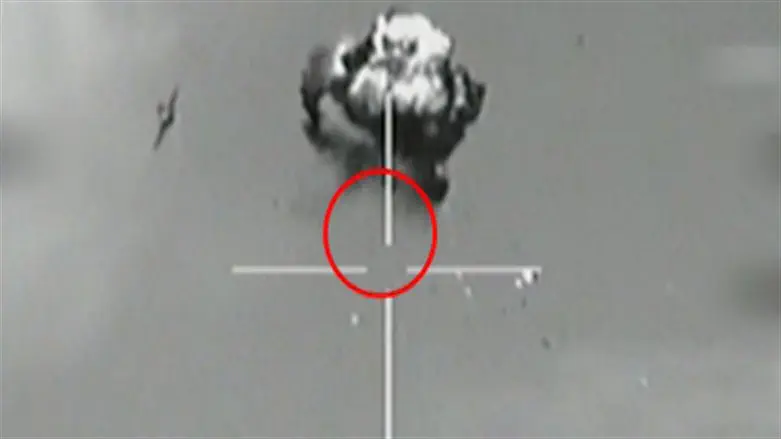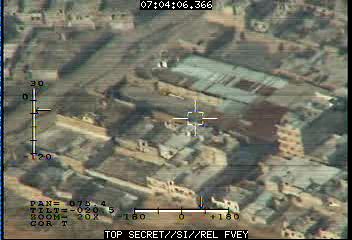
Iran is building a growing arsenal of advanced Unmanned Aerial Vehicles (UAV) on its territory, while also equipping its various proxies with increasing amounts of such capabilities.
Iranian-made UAVs are being proliferated to Hezbollah and Hamas in Lebanon, Shi’ite militias and Hezbollah in Syria, Shi’ite militias in Iraq, the Houthis in Yemen, and to Hamas and Palestinian Islamic Jihad in Gaza. The program to research and develop UAVs in Gaza is receiving the active assistance of Unit 340 of the Quds Force.
According to the information in our possession, and professional assessments made on its basis, in a very high probability, Hezbollah today possesses approximately 2000 UAVs.
It is the Islamic Revolutionary Guards Corps’ logistics Directorate that is in charge of transporting and deploying the UAV Army throughout the Middle East. This includes the trafficking and distribution of these systems to all Iranian proxies in Lebanon, Syria, Iraq, Yemen, and Gaza.
Sanctions have had no effect on this production effort since many of the components needed for this arms industry are standard off-the-shelf parts that can easily be bought online. Often, procurement agents living in Western states carry out such purchases and send them to Iran-Shi’ite axis representatives via the Iranian diplomatic postal system.

This threat isn’t limited to the Middle East. Iranian UAVs are also now active in African states and in Venezuela, 2000 kilometers away from Florida.
Iran’s ‘UAV Army’ is made up of thousands of unmanned systems, which are designed to gather intelligence, and to strike surface or air targets, either by launching missiles and bombs, or conducting a suicide explosive attack by diving into the target.
In some cases, Iran’s production design for UAVs that are destined for its proxies differs from the systems used by Iran directly, making it somewhat harder to trace them back to the Islamic Republic.
The completee report (linked at the end of this article) will highlight nine UAV types and 48 Iranian models. Some are operational and some are still in the planning and trial phases. In addition, the report highlights UAV models used by Hezbollah, Hamas, and Palestinian Islamic Jihad.
The report also highlights over 20 production, storage, and launch sites in Iran, Iraq, Syria, and Lebanon.
Recent months and years have already provided a glimpse into the devastating manner in which UAVs can be used in modern combat to target strategic sites. They have been used to strike airports and oil fields in Saudi Arabia – both by the Houthis and directly by Iran, used against U.S. forces in Iraq and Syria by Shi’ite militias, and used by Iran to strike moving merchant ships linked to Israeli businessmen.
Hezbollah and Shi’ite militias have used them to attack Syrian opposition forces and ISIS, while Hamas and Palestinian Islamic Jihad have been making steady use of UAVs as well.
The increasing use of UAV swarms is also an indication of the future of this weapon system.
When Iran realized that it could not create a suitable military aerial response force in the Middle East, or counter Israeli Air Force aircraft, it turned to UAVs and to precision surface-to-surface missile systems as its answers.
This gave the Iranians their long-sought-after ‘long operational’ reach, which can hit any location in the Middle East.
In Israel and around the world, the realization of the strategic threat posed by UAVs is sinking in. In September, Defense Minister Benny Gantz said Iran’s UAV arsenal is “one of the most significant tools” developed by Tehran, calling it an “array of deadly weapons which, like ballistic missiles or planes, can cross thousands of miles.”
The U.S. Treasury Department described the expansion of the UAV Army in the region “as a threat to peace and destabilizing international stability.”
After 40 years since making the first Iranian UAV in 1984, the Islamic Republic has evolved highly advanced operational capabilities in this sector. Some of the knowledge was also obtained by copying Western technologies, enabled through the falling of American and Israeli UAVs into Iranian hands. Still, Iran is not dependent on Western UAV technology and has been able to reach its present advanced level through its own independent efforts.
It is not possible to stop the development, production, and deployment of Iran’s UAV Army, but the U.S., Israel, and pragmatic Arab-Sunni states can work together to disrupt and challenge these processes. This involves utilizing advanced protection systems and initiating attacks on targets linked to the UAV army.
Iranian UAVs have already become an inseparable aspect of regional conflict, and this trend will only increase with time.
Download Full Report- Iran’s “UAV Army” – A Global Threat!
Register to the webinar – Iran’s “UAV Army”
Tal Beeri is Director of Reseach at the Alma Research and Education Center, a non-profit and bipartisan organization with the mission of making in-depth geopolitical knowledge about the Middle East accessible to English speakers. Posted with permission from Alma CEO Lieutenant Colonel (Res.) Sarit Zehavi.